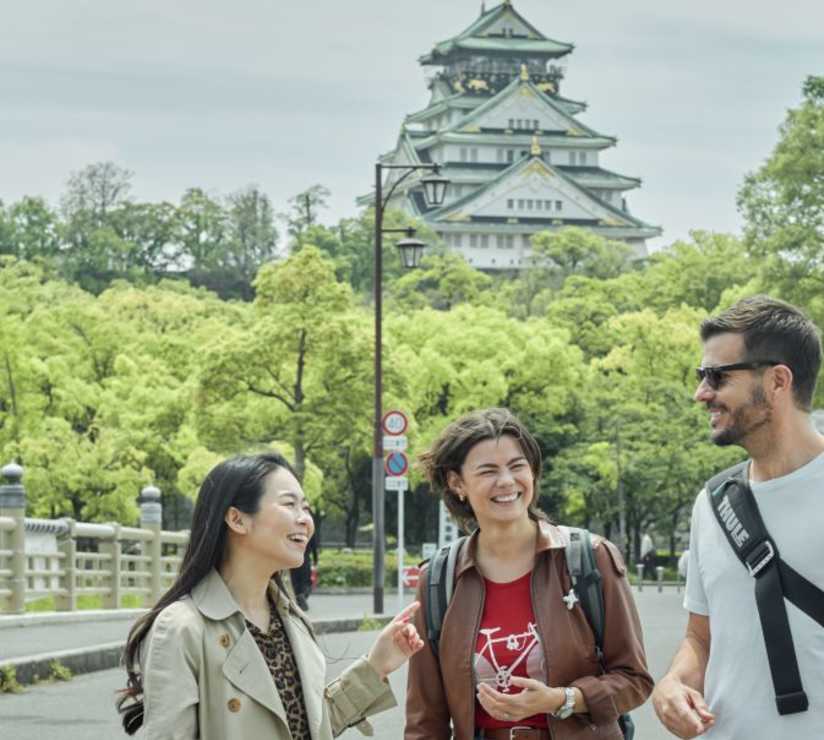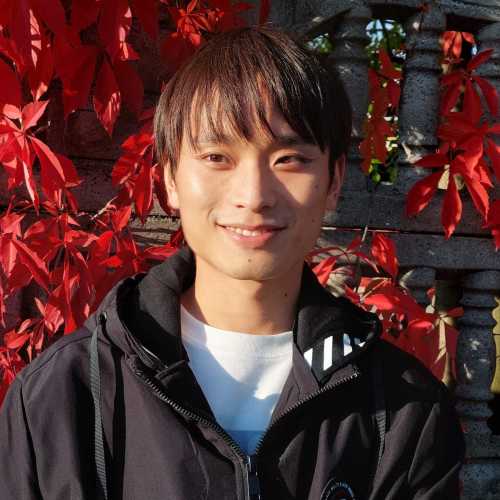Table Of Contents
- Introduction to Osaka
- How to Navigate Osaka's Layout
- Getting to Osaka
- Getting Around Osaka
- Osaka Airports
- Where to Stay in Osaka
- Osaka's Street Food Scene
- When to Visit Osaka
- Local Etiquette in Osaka
- Best Neighborhoods Beyond Tourist Areas
- Major Attractions
- Shopping Around Osaka
- What Osaka Really Offers

A traveler entering Kansai International Airport Photo by Andrew Leu on Unsplash
I’ve lived in Osaka my whole life, and here’s what I wish visitors actually knew. Not the glossy tourist board version, but the real deal.
You’ll find plenty of guides about the obvious spots in Osaka. What they won’t tell you is that Osaka rewards the curious and punishes the unprepared. I’m Rei Nakamoto-Smith, and these are the things to know when visiting Osaka that actually matter.
Most visitors make the same mistakes when they come to visit. They follow crowds from Osaka International Airport to Dotonbori, take photos at Osaka Castle, and leave thinking they’ve seen Osaka. They haven’t.
At first glance, Osaka might not seem especially beautiful or impressive, but its true character and energy reveal themselves the more you explore beneath the surface.
Introduction to Osaka
Osaka isn’t just another stop on your Japan itinerary; it’s the city that locals from all over the country visit to taste something real. As Japan’s third-largest city, Osaka pulses with energy, from the neon lights of Dotonbori to the timeless silhouette of Osaka Castle. This is where you can wander from centuries-old temples to bustling shopping streets in a single afternoon, and where the scent of sizzling street food is never far away.
Osaka’s reputation for delicious food is legendary; think savory pancakes, crispy takoyaki, and late-night ramen that locals swear by. But it’s not just about eating; it’s about experiencing a city proud of its working-class roots, iconic landmarks, and open-armed hospitality. Whether you’re here for the history, the food, or just to soak up the city’s unique vibe, Osaka is a must-visit that delivers unforgettable moments at every turn.

Street sign with directions to central districts Photo by blue soda on Unsplash
How to Navigate Osaka's Layout
Osaka’s layout makes no sense to outsiders. The city grew organically around rivers and rail lines. As a sprawling city, Osaka's vastness can be easily navigated thanks to its efficient public transportation system. Understanding this saves hours of confused wandering around Osaka.
Why Osaka Feels Like Multiple Cities
Osaka operates as distinct districts. Umeda is business and shopping. Namba and Dotonbori are entertainment and food. Tennoji connects you to the south.
Each district developed independently. Umeda grew around the original station. Namba evolved from old pleasure quarters. This history explains why districts feel different when you explore Osaka. Each district feels like its own town, with a unique character and local culture that sets it apart within the city.
Osaka’s center isn’t one place. It’s several interconnected hubs around Osaka. Plan your days by district, not scattered attractions.
Umeda workers rarely venture to Namba. Namba locals shop locally rather than trekking to Umeda. Respect these boundaries around Osaka.
Reading Osaka's Address System
Japanese addresses work backwards. They go from large to small: prefecture, city, ward, district, block, building. In Osaka, the ward matters most for navigation.
Naniwa-ku, Chuo-ku, Kita-ku; learn these ward names when visiting. Street names barely exist. We navigate by landmarks and stations around Osaka.
The Underground Network
Osaka's underground passages connect major areas, especially around Osaka and Namba Station. These are shopping districts and weather protection during your visit to Osaka.
The network spans several kilometers around Osaka. You can walk from Osaka Station to Namba entirely underground.
Different sections serve different purposes. Osaka Station underground focuses on commuter services. Namba underground caters to entertainment and shopping.
The underground can be disorienting around Osaka. You'll emerge blocks from where you expected. Use station exits as reference points.
Looking for a private city experience in Osaka?
Explore the city with a local who plans a private day just for you; no groups, no scripts.
Getting to Osaka
Getting to Osaka is refreshingly straightforward, whether flying in from abroad or hopping over from another Japanese city. The city is served by two major airports: Kansai International Airport (KIX), the main international airport for the region, and Osaka International Airport (Itami, ITM), which handles most domestic flights. Kansai International Airport is your gateway if you’re arriving from overseas, with direct connections to the city center via express trains and buses. If you’re coming from within Japan, Osaka International Airport offers quick access to central Osaka and beyond.
For those traveling by train, Shin Osaka Station is the city’s bullet train hub, connecting Osaka to Tokyo, Kyoto, and other major cities across Japan. Whether you’re arriving by air or rail, you’ll find yourself plugged into one of the country’s most efficient transportation networks, making it easy to start exploring everything Osaka has to offer.
Getting Around Osaka
Transportation in Osaka operates on efficiency, not convenience. Master the system or spend your trip frustrated. Prepaid cards like ICOCA, Suica, or Pasmo are widely used for public transportation and make getting around Osaka much easier.

JR map showing key connections Photo by Jackie Alexander on Unsplash
Osaka Airports
Kansai Airport serves as Japan's main international airport for the Kansai region, handling millions of visitors to Japan annually. Unlike Japan's capital city, Tokyo, which has multiple airport options, Osaka relies primarily on this single hub.
Flight schedules peak during late June and late July when many tourists visit Japan for summer festivals, making advance booking essential during these busy months in Japan. Kansai International Airport serves most international flights to Osaka. The Kansai Express connects to central Osaka in 45 minutes. Don't take the regular train; it doubles travel time.
Express trains run every 30 minutes during peak hours. Reserved seats cost extra but guarantee space during busy periods to Osaka.\ Itami Airport handles domestic flights to Osaka. The monorail connects to the JR network for getting around Osaka.\ Shin Osaka Station is your bullet train hub, not Osaka Station. The Shinkansen from Tokyo lands at Shin Osaka Station. The subway connects you to downtown Osaka in 15 minutes.
IC Cards
Get an IC card immediately when you arrive in Osaka. ICOCA works throughout Osaka. Cash works for trains, but IC cards make everything faster.\ The card works beyond trains in Osaka; convenience stores, corner stores, vending machines, and some restaurants around Osaka.
Walking Routes
Central Osaka is walkable. Namba to Dotonbori to Shinsaibashi forms one continuous district. Walk it in 20 minutes instead of figuring out subway connections around Osaka.
Osaka Station to Umeda Sky Building is a 10-minute walk through covered passages. Taking trains makes no sense for this distance around Osaka.
What if your day in Osaka was planned by someone who knows it — and you?
City Unscripted matches you with a local host who creates a private experience based on your interests, not a set route.
Where to Stay in Osaka
Osaka’s accommodation scene is as diverse as the city itself. Whether you’re after the charm of traditional Japanese inns (ryokan), the convenience of modern business hotels, or the luxury of high-rise resorts, you’ll find something to suit your style and budget. Staying in central Osaka puts you close to the action, with easy access to major train stations like Osaka Station and Shin Osaka Station. These areas are perfect for first-timers who want to hit the ground running and explore the city’s main sights without wasting time on long commutes.
If you’re looking for a more local experience, consider neighborhoods like Namba or Umeda, where you’ll find everything from boutique hotels to cozy guesthouses. Proximity to train stations is a huge plus, making it simple to zip around Osaka or take day trips to nearby cities. No matter where you stay, you’ll never be far from great food, shopping, and the city’s unmistakable energy.

Close-up of Japanese convenience store meal shelf Photo by Declan Sun on Unsplash
Osaka's Street Food Scene
Street food matters in Osaka. We're proud of our food culture. But most visitors end up at overpriced stalls targeting foreigners with generic Japanese food instead of experiencing real food in Osaka.
Where Locals Eat Takoyaki
Forget Dotonbori takoyaki stands with English menus. Real takoyaki in Osaka comes from neighborhood shops with lines of locals.
Try Juhachiban in Nippombashi during your visit. Small shop, no English, perfect takoyaki. Or Daikan in Shinsekai; they’ve made octopus balls since before takoyaki became famous around Osaka. Also, try to experience an authentic local meal at one of the many traditional Japanese inns.
The best takoyaki shops in Osaka look unremarkable: faded signs, small storefronts, maybe a few stools. But locals know quality food.
Authentic takoyaki is often topped with green onions, a traditional ingredient that enhances both the flavor and appearance of the dish.
Timing matters for takoyaki around Osaka. Fresh batches come out every 10-15 minutes. If locals are waiting, join the line.
Price indicates authenticity in Osaka. Tourist stands charge 600-800 yen for 6-8 pieces. Local shops charge 400-500 yen for better ingredients.
Okonomiyaki
Okonomiyaki is Osaka's soul food. We make it differently than Hiroshima; theirs's stacks of ingredients; ours mixes them. This matters to locals in Osaka.
Mizuno in Dotonbori gets tourist attention, but locals prefer smaller shops around Osaka. Kiji offers good quality without tourist markup.\ Watch the cooking process in Osaka. Real okonomiyaki takes time. If they're rushing for tourists, texture suffers.
Convenience Store Food
Here's what food guides ignore about Osaka: convenience store meals rival restaurant quality. 7-Eleven, FamilyMart, and Lawson stock fresh, local items around Osaka.
Try karaage chicken, onigiri with regional fillings, or seasonal bentos; it's how locals eat when we want quality without fuss.
Street Food Etiquette
Don't walk while eating street food in Osaka. Find a spot to stand and finish, then move on. Most vendors provide standing areas around Osaka.
Dispose of trash properly around Osaka. Vendors provide bins, or carry waste until you find disposal. Don't leave it on the streets.

Tenjin Matsuri boat parade at dusk. Photo by Buddy AN on Unsplash
When to Visit Osaka
The timing of your visit affects what you’ll experience. Each season offers different advantages.\ For a change of pace, consider taking a day trip to nearby attractions like Nara or Katsuo-ji Temple.
When are the Cherry Blossoms in Bloom?
Cherry blossom season (late March to early April) is beautiful but crowded in Osaka.
If you come to Osaka for cherry blossoms, visit early morning or late evening. Midday crowds make photography difficult around Osaka, especially in the city center and shopping streets.
Alternative spots: Kema Sakuranomiya Park offers similar beauty with fewer tourists. Sumiyoshi Park provides local hanami experiences around Osaka.
Summer Festivals
Summer in Osaka is humid, but it's festival season. Tenjin Matsuri in July ranks among Japan's top festivals and brings visitors to Osaka.
When visiting the city, festival crowds require patience. Arrive early, claim your spot, and prepare to wait.
Best Weather
October and November offer the best conditions for visiting Osaka. Comfortable temperatures, less humidity, autumn colors without cherry blossom crowds.
Spring brings pleasant weather, but it is the peak tourist season for visiting Osaka.
Tip
We match you with the right host, not just any guide.Want to experience the real Osaka with someone who lives there?
A fully private experience, planned and led by a local host who tailors the day to you

Sign showing local etiquette rules
Local Etiquette in Osaka
Osaka operates on specific social rules. Break them and you'll stand out during your visit.
Transportation Behavior
Stand right on escalators around Osaka. Walk left. This isn't negotiable; we take escalator etiquette seriously.
Don't eat on trains around Osaka. Locals consider it poor manners. Water is acceptable; meals are not.
Phone conversations on trains are discouraged around Osaka. Keep calls brief or wait until you exit.
Restaurant Etiquette
Don't tip at restaurants in Osaka. It confuses staff and can be insulting. Good service is expected in Osaka.
Small restaurants often seat strangers together around Osaka. This is normal. Nod politely and mind your business.
Slurping noodles is acceptable when you eat in Osaka. It shows appreciation and helps cool the broth.
Photography Rules
Don't photograph people without permission. Tourist areas like Dotonbori are more lenient, but residential areas require discretion.
Many temples prohibit photography of specific areas around Osaka. Look for signs before taking photos.
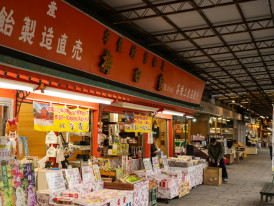
Market street in Tsuruhashi. Photo by Kouji Tsuru on Unsplash
Best Neighborhoods Beyond Tourist Areas
Real Osaka exists beyond Dotonbori and the city's Castle. These areas offer authentic experiences around Osaka.
Shinsekai
Shinsekai preserves the old Osaka atmosphere. Built in 1912, it maintains early 20th-century architecture and food culture.
Try kushikatsu (fried skewers) at traditional shops in this part of Osaka. Rule: never double-dip the sauce. Everyone shares the same pot.
Tsutenkaku Tower dominates the skyline around Shinsekai in Osaka. It represents Osaka's post-war rebuilding spirit.
Tsuruhashi
Tsuruhashi hosts Osaka's Korean community. The market offers ingredients difficult to find elsewhere in Osaka.
Authentic Korean barbecue restaurants operate alongside Japanese shops around Tsuruhashi. This cultural mixing represents Osaka's international character.
Visit during afternoon hours when vendors are most active in this part of Osaka.
Nakazakicho
Nakazakicho attracts artists and designers to this creative district of Osaka. Narrow alleys house independent shops and galleries around this area.
This area rewards exploration without specific destinations around Osaka. Discover unique shops and interact with owners.
Kyoboshi
Kyoboshi remains residential with commercial activity supporting local life around this part of Osaka. Experience Osaka as locals live it.
Small restaurants serve neighborhood regulars around Kyoboshi. Don't expect English menus, but expect authentic food and fair prices.
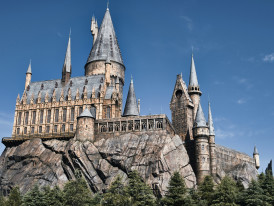
Wizarding World facade and crowd Photo by Yu on Unsplash
Major Attractions
Let’s address obvious attractions honestly. Some live up to their reputation when you visit, whereas others will depend on your individual likes and dislikes.
Osaka Castle
Osaka Castle is one of the city’s most iconic landmarks, surrounded by a beautiful park and impressive stone walls. The entrance fee for Osaka Castle includes access to the main tower’s museum and observation area, offering historical exhibits and city views. The castle is especially popular during cherry blossom season, when the park is filled with blooming trees and visitors enjoying hanami picnics.
Umeda Sky Building
The Umeda Sky Building is a striking piece of architecture with a unique design. Its observation deck, known as the Floating Garden Observatory, provides panoramic views of Osaka’s skyline and is a must-visit for those seeking breathtaking cityscapes.
Universal Studios Japan
Universal Studios Japan is a major draw for families and movie fans, featuring themed rides and attractions based on popular films. Located in the vibrant Osaka Bay Area, this waterfront district is also home to a variety of dining and entertainment options, making it ideal for sightseeing and relaxation.
Kaiyukan Aquarium, also situated in the Osaka Bay Area, is considered one of the most impressive aquariums in the world. It features extensive interactive exhibits and a wide variety of marine life, making it both educational and entertaining for visitors of all ages.
Osaka Castle
The Castle is a concrete reconstruction from 1931, not the original structure. The exterior looks authentic, but the interior houses a modern museum.
This doesn't make Osaka Castle worthless. It provides historical context and city views. But manage expectations; you're visiting a 20th-century interpretation.
The surrounding park offers more authentic experiences than Osaka Castle itself. Cherry blossom season transforms it into Osaka's premier hanami location.
Universal Studios
Universal Studios Japan differs from the American versions and attracts millions to Osaka. Unique attractions like Harry Potter justify visits for theme park enthusiasts.
However, crowds can be overwhelming during Japanese school holidays. Express passes help, but add significant cost.
If you're not a theme park person, your time works better elsewhere during your visit to Osaka.
Sumiyoshi Taisha
Sumiyoshi Taisha represents authentic Japanese spiritual architecture. Unlike Osaka Castle, these buildings maintain traditional construction methods.
The shrine complex provides quiet spaces difficult to find in central Osaka. Early morning visits offer solitude away from busy streets.
Ready to plan your perfect day in Osaka?
Start your experience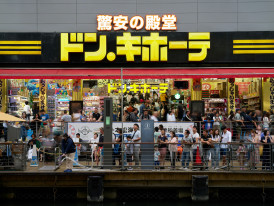
Boutique in Nakazakicho Photo by Buddy AN on Unsplash
Shopping Around Osaka
Shopping in Osaka extends beyond department stores and souvenir shops. Understanding local shopping culture helps you find better values around Osaka.
Underground Shopping
Umeda's underground shopping connects multiple buildings in central Osaka. It's vast, air-conditioned, and houses everything from international brands to local specialties.
The network spans 2 kilometers in multiple directions around Umeda. Different sections have different characters for shopping around Osaka.
Navigate by sections: food courts, fashion, electronics, and services. Don't try to see everything in one visit; it's massive for shopping around Osaka.
Shinsaibashi
Shinsaibashi represents mainstream Japanese fashion culture and is a major shopping destination in Osaka. Department stores anchor the district, but smaller boutiques provide interesting discoveries. Visitors can enjoy a shopping spree in Shinsaibashi, exploring the large department stores and unique local boutiques for a lively and memorable experience.
American tourists find Japanese sizing runs small when shopping in Osaka. Check return policies before purchasing clothing.
The covered shopping arcade protects from the weather and creates a unique atmosphere for shopping around Osaka.
Independent Shops
Nakazakicho offers alternative shopping experiences around Osaka. Small boutiques and vintage stores operate in converted buildings.
This area changes frequently as businesses open and close around Osaka. What you find during shopping might not exist next year.

Quiet moment with train passing behind local street Photo by Mak on Unsplash
What Osaka Really Offers
Osaka offers authenticity without pretense, incredible food without ceremony, and urban energy that never feels forced.
We’re not trying to be Tokyo. We’re not competing with Kyoto’s refinement. Osaka is working-class Japan with confidence, pride, and some of the best eating in the world.
The things to see in Osaka aren’t always famous attractions. There are moments when you understand why eight million people choose to live, work, and raise families in Osaka.
Come with curiosity when you visit the foodie capital of Japan. Osaka rewards the flexible and punishes the rigid. Street food tastes better when you’re not comparing it to home.
Shopping becomes an adventure when you’re exploring rather than hunting for specific items around Osaka. If you want polish, visit Tokyo. If you want tradition, choose Kyoto.
If you want real Japan with rough edges and incredible heart, Osaka, Japan’s third largest city, is waiting. Osaka and the wider Kansai area welcome you with open arms, making every traveler feel at home, whether you’re exploring the city or taking day trips to Kyoto or Nara.
What if your day in Osaka was planned by someone who knows it — and you?
City Unscripted matches you with a local host who creates a private experience based on your interests, not a set route.
Want to experience the real Osaka with someone who lives there?
A fully private experience, planned and led by a local host who tailors the day to you
